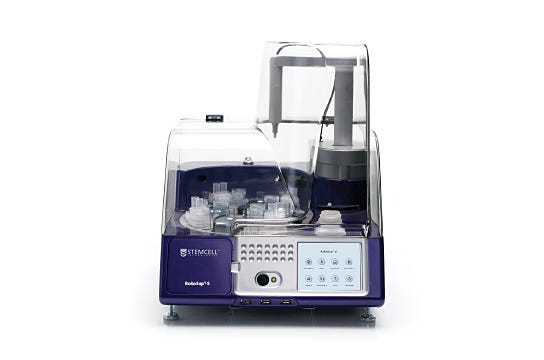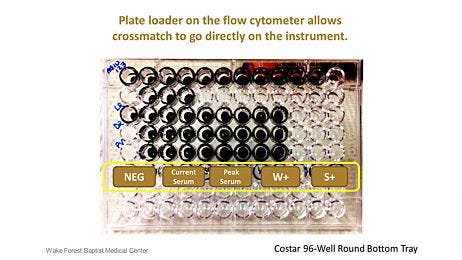RoboSep™ - Automated Cell Separation Instruments
RoboSep™ Cell Separation Instruments
Fully Automated Cell Isolation System
Why Use RoboSep™ Cell Separation Instruments?
- Perform sequential or simultaneous cell isolations from up to 16 samples.
- Isolate virtually any cells from a wide range of sample sources and sizes using positive or negative selection protocols.
- Minimize sample handling and risk of exposure to dangerous pathogens.
- Work with our experts to design customized cell separation protocols to isolate cells of interest for special or non-standard applications.
- Use without daily washing or decontamination.
We like the reliability of the RoboSep™, the minimization/elimination of specimen handling by the tech during subset separation, and the low maintenance of the instrument. These factors are important to us with such a high throughput of samples processed.
Wendy Leong, Senior Clinical Laboratory Scientist
Compare RoboSep™ Cell Isolation Instruments
RoboSep™-S: Automated Cell Isolation for Up to 4 Samples
With an easy-to-use interface and fast cell separation protocols, RoboSep™-S fits easily into the workflow of any lab that needs the multi-sample processing capacity, speed, reliability, and convenience of automated cell isolation. Perform simultaneous cell isolations for up to 4 samples or sequential isolation of up to 4 cell types from the same sample. Simply select your protocol, load the samples and reagents, press “Run”, and return in 25 to 60 minutes to collect your purified cells. The compact instrument design allows you to place multiple units side by side in biological safety cabinets or on lab benches to increase cell processing and isolation capacity. Request a demo for your lab.
RoboSep™-S Cell Separation Instrument Tour
RoboSep™-16: Automated Cell Isolation for Up to 16 Samples
With RoboSep™-16, you can perform fully automated cell processing and isolations from a large number of samples. Through an intuitive user interface, the RoboSep™-16 cell separation system simultaneously isolates cells from up to 16 samples with minimal hands on time. By automating all reagent and sample handling steps, and through the use of disposable pipette tips, the RoboSep™-16 rapidly isolates all desired cells while minimizing the risk of sample cross-contamination. Request a demo for your lab.
RoboSep™-16 Cell Separation Instrument Tour
Key Applications
Fully Automated, High Purity Cell Isolation for Chimerism Labs
This technical bulletin describes a method to automate isolation of lymphoid (T and B cells) and myeloid lineages from human whole blood samples for chimerism analysis.
Automated Lymphocyte Isolation for the Flow Cytometry Crossmatch Assay
This technical bulletin presents a case study of how an automated cell separation system can free up valuable technician time. See how you can use RoboSep™ to minimize sample handling and reduce the overall time to obtain cells for the flow cytometric crossmatch assay, all without compromising assay sensitivity.
This describes a method used by the Florida Tissue Typing Laboratory to sequentially isolate B cells, T cells, myeloid cells, and NK cells starting from a single sample of HetaSep™-treated blood for their chimerism analysis.
New ex vivo models enable a closer approximation of the in vivo environment than traditional in vitro approaches. Here we highlight that employ a variety of ex vivo models to gain deeper insight into the dynamics of HIV infection.
Technical Resources
Watch a series of videos that provide an overview on how to use and maintain your RoboSep™-S automated cell separation instrument.
See all references using RoboSep™.






